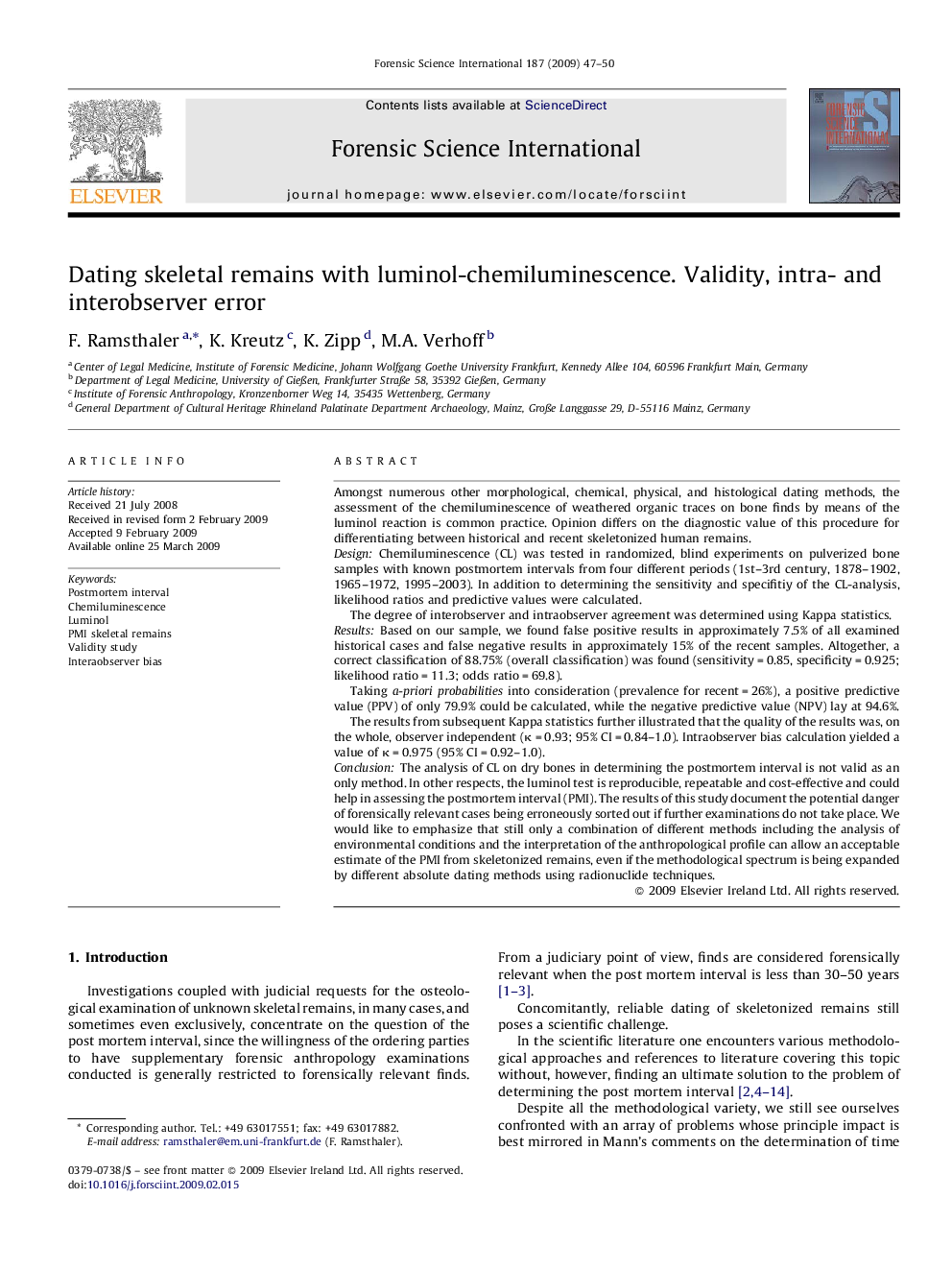| کد مقاله | کد نشریه | سال انتشار | مقاله انگلیسی | نسخه تمام متن |
|---|---|---|---|---|
| 97408 | 160492 | 2009 | 4 صفحه PDF | دانلود رایگان |

Amongst numerous other morphological, chemical, physical, and histological dating methods, the assessment of the chemiluminescence of weathered organic traces on bone finds by means of the luminol reaction is common practice. Opinion differs on the diagnostic value of this procedure for differentiating between historical and recent skeletonized human remains.DesignChemiluminescence (CL) was tested in randomized, blind experiments on pulverized bone samples with known postmortem intervals from four different periods (1st–3rd century, 1878–1902, 1965–1972, 1995–2003). In addition to determining the sensitivity and specifitiy of the CL-analysis, likelihood ratios and predictive values were calculated.The degree of interobserver and intraobserver agreement was determined using Kappa statistics.ResultsBased on our sample, we found false positive results in approximately 7.5% of all examined historical cases and false negative results in approximately 15% of the recent samples. Altogether, a correct classification of 88.75% (overall classification) was found (sensitivity = 0.85, specificity = 0.925; likelihood ratio = 11.3; odds ratio = 69.8).Taking a-priori probabilities into consideration (prevalence for recent = 26%), a positive predictive value (PPV) of only 79.9% could be calculated, while the negative predictive value (NPV) lay at 94.6%.The results from subsequent Kappa statistics further illustrated that the quality of the results was, on the whole, observer independent (κ = 0.93; 95% CI = 0.84–1.0). Intraobserver bias calculation yielded a value of κ = 0.975 (95% CI = 0.92–1.0).ConclusionThe analysis of CL on dry bones in determining the postmortem interval is not valid as an only method. In other respects, the luminol test is reproducible, repeatable and cost-effective and could help in assessing the postmortem interval (PMI). The results of this study document the potential danger of forensically relevant cases being erroneously sorted out if further examinations do not take place. We would like to emphasize that still only a combination of different methods including the analysis of environmental conditions and the interpretation of the anthropological profile can allow an acceptable estimate of the PMI from skeletonized remains, even if the methodological spectrum is being expanded by different absolute dating methods using radionuclide techniques.
Journal: Forensic Science International - Volume 187, Issues 1–3, 30 May 2009, Pages 47–50